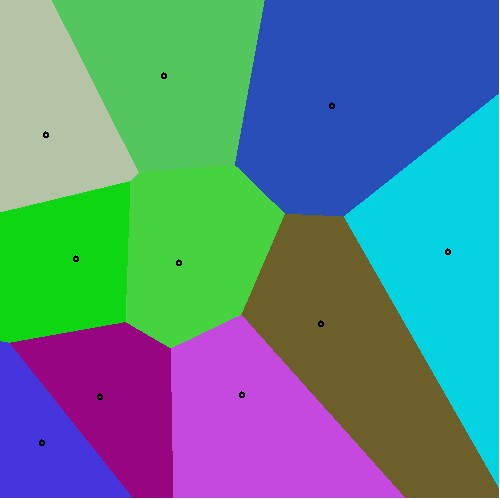
function Voronoi(site : integer; x,y : double) : boolean;
{
Voronoi region that
belongs to a (site)
}
var
N,k : integer;
x1,x2,y1,y2,xm,ym,f : double;
OK : boolean;
begin
N := Length(rij);
OK := true;
x1 := rij[site].x; y1 := rij[site].y;
for k := 0 to N-1 do
begin
if k = site then Continue;
x2 := rij[k].x; y2 := rij[k].y;
{ For all Perpendicular Bisectors }
xm := (x1+x2)/2; ym := (y1+y2)/2;
f := (x-xm)*(x2-x1)+(y-ym)*(y2-y1);
OK := OK and (f < 0);
end;
Voronoi := OK;
end;
With the previous section in mind, it has become a matter of routine
to visualize the accompanying regions as a partition of subsets of the computer screen at hand:

The above is part of a whole bunch of Voronoi & Delaunay activities
which took place in November 2021.
A major lesson is that making a Delaunay Triangulation out of Voronoi Regions is
not as simple in practice as it seems to be in theory. First step is to delineate the regions with Isolines/Contours.
The next step is recognition of the straight lines, which in theory can be done with Fan Data Compression. Then we can
draw perpendiculars from the sites onto those straight lines and we should obtain sort of a Delaunay triangulation.
The pictures below show that practice is not quite close to theory. Screen pixels are not small enough for the purpose
of obtaining a decent approximation.
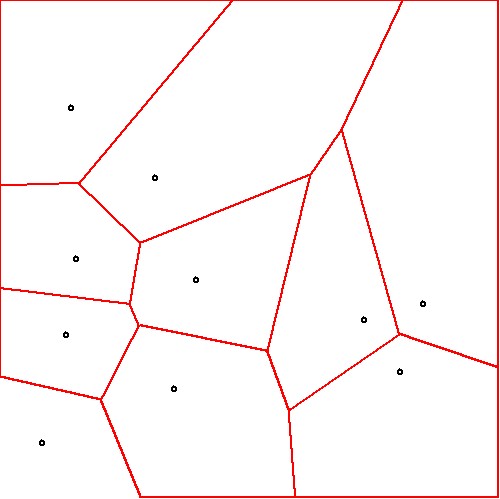
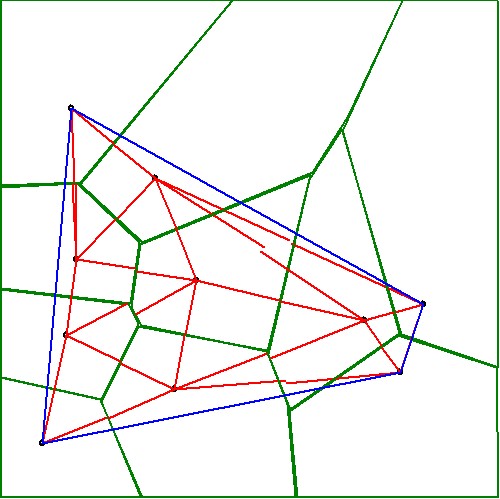
The reverse procedure - obtaining Voronoi Regions out of a Delaunay Triangulation - is easier to do and much more accurate:
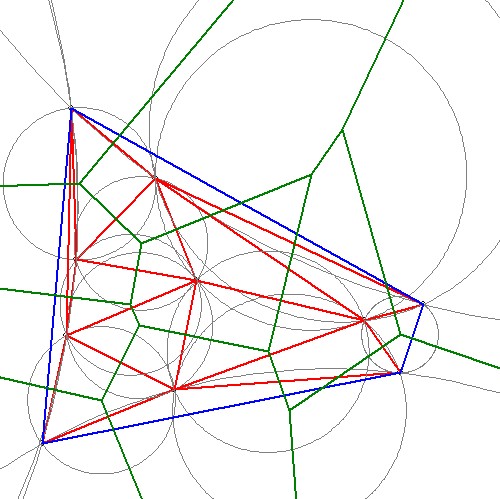
A major lesson to be drawn from the latter, however, is that the boundary - a convex hull in our case - is rather tricky.
Triangles with sides at the hull can not be handled on the same footing as triangles inside the bulk of the mesh. Details
are found in the programming.
Obtaining an efficient computation of the Delaunay Triangulation is a challenge as such.
I have developed a supposedly new method for doing this, which is claimed to have an efficiency $O(n^2)$, while the brute
force method adopted at an earlier stage is only $O(n^4)$. The new method works by starting at the hull and proceeding
towards the inside of the mesh to be formed. It seems that the most appropriate data structure for such a procedure has
to be based upon (oriented) edges instead of triangles. The usual connectivity of a triangular mesh is recovered
only at the last step. Here is an animation of the method.
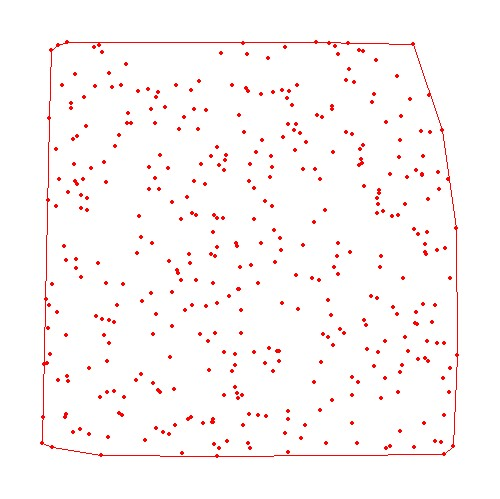
Becoming off-topic more and more; therefore the story is continued at : What is the proper way to do DTFE .